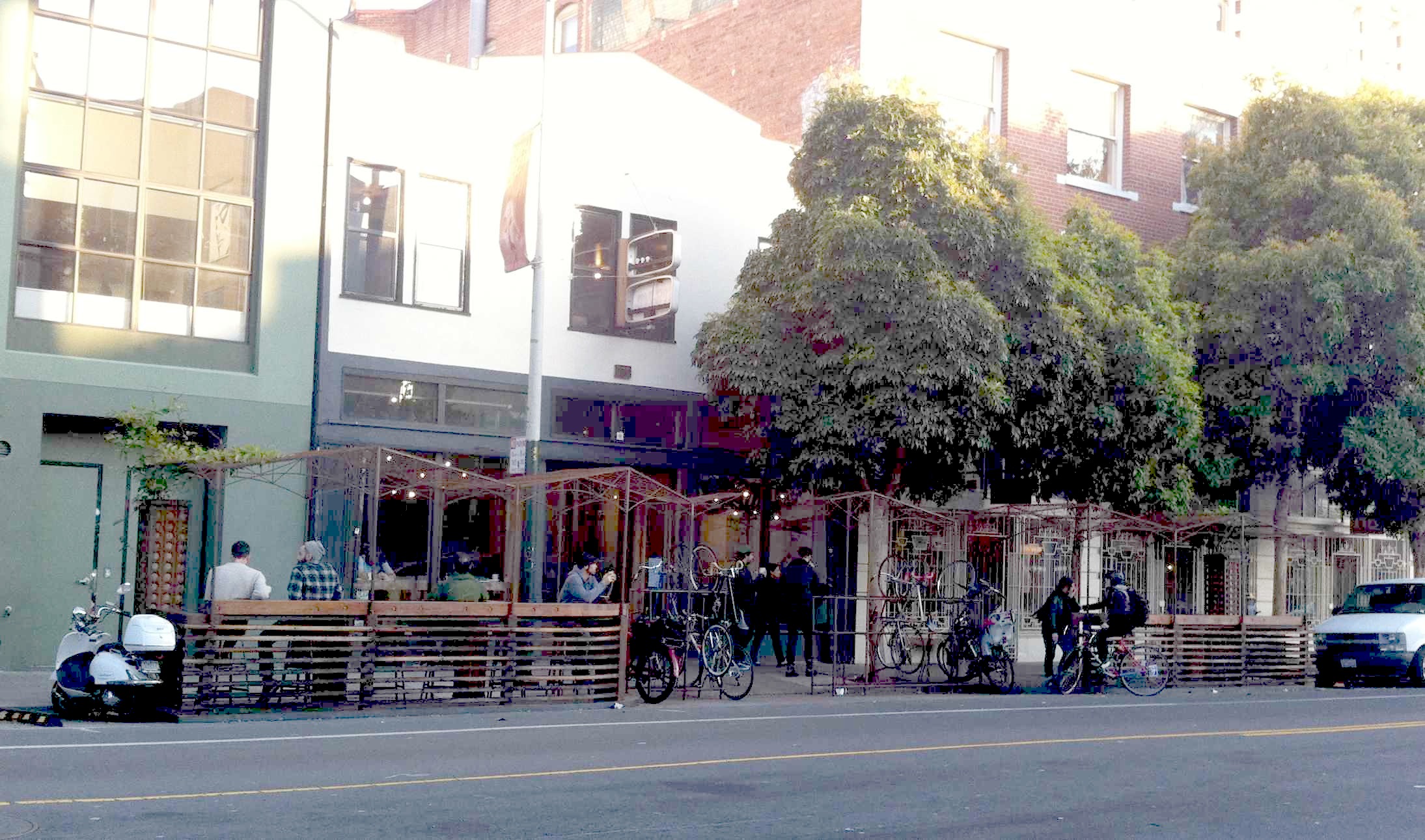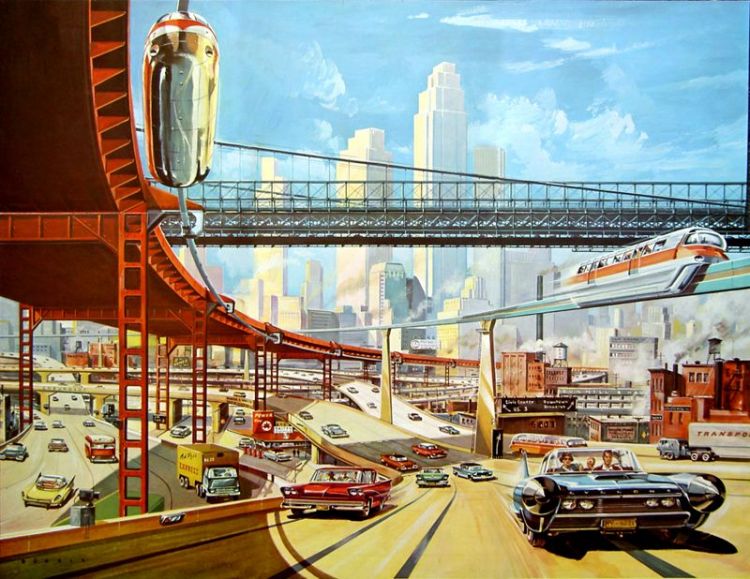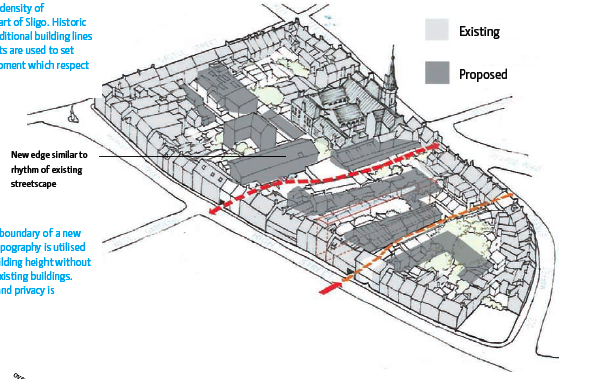Since 2008, a majority of the world’s population lives in cities1. Each hour, approximately 7,500 people move from the country to the city.2
Design of cities is thus crucial to the quality of human life. Compact, diverse, carefully planned cities offer better economic, cultural and social opportunities11 and promote gender equality1. Through the 20th century, cities were adapted to cater for private car use as a major transport mode. New towns, communities and suburbs followed suit, taking the form of urban sprawl and descending into almost total dependence on the private car for transport.

The last few decades have seen a reaction. Realising that compact cities are economically and environmentally more efficient, governments 6,7,8,10,12 and local authorities worldwide13 have been attempting to introduce higher standards of urban design, and to counter uncontrolled development and sprawl. The issues and practices are complex, and a successful city requires many factors to be managed in an integrated way, including-
- Close co-ordination between regions, neighbouring cities and adjoining local authorities;
- Best evidence-based practice available to and followed by urban designers;
- Urban planners being empowered, through national or local legislation backed by meaningful enforcement, to enact best practice;
- Citizens being consulted, involved and informed at every step of an urban design process;
- Stakeholders such as community groups, builders, financiers, developers and transport providers also being consulted.
Good urban design

Successful urban design offers citizens23–
- Permeability -the ability to travel through the city on varied routes;
- Vitality -a varied experience of other citizens, culture and business services;
- Legibility– a clear layout and set of nodes, landmarks and routes which allow citizens navigate and understand their geography.
A successful urban environment might feature9–
- No development created without high-quality transport facilities serving it;
- Vertical as well as land-use zoning i.e. uses can vary within buildings or properties as well as within districts;
- A minimum of around 150 dwellings per hectare, in two- to eight- storey buildings9;
- High-quality urban spaces with good proportions, attractive, functional buildings and good orientation to sun, wind and views;
- A mix of facilities allowing a variety of activities in urban spaces;
- 30 mins commuting times9;
- ‘Week-to-week’ facilities for residents located within 800m (10 mins walk) of dwellings;
- Access for all to parks, playgrounds and natural features like sea fronts or rivers;
- Respect for the heritage and history of the city; conservation of historic structures; celebration of local cultures.

Urban sprawl suppresses the opportunities and progress cities offer by-
- Imposing direct costs14 of motoring;
- Reducing economic connectivity and innovation5 ;
- Promoting ill-health through sedentary and polluted lifestyles3,15 ;
- Creating social severance2 , and
- Excluding 42%17 of the population including the elderly, those with poorer sight, epilepsy or other disabilities, and the less affluent, from equal participation in society.
Promoting vehicle use, which in turn-
- Increases collision fatalities and injuries;
- Promotes air, noise and light pollution;
- Deprives children of independence in social or leisure activities17, leading to lack of independence and confidence.

Measures for Existing Cities
Existing cities can and are being retrofitted to reclaim urban sprawl and bring back livability. Measures might include9,22 the following.

- Better administration and control– Increased co-ordination of regional bodies, as well as-
- Co-ordination of transport and land-use policies;
- Empowerment of local society to mandate and enforce sustainable development on developers, financiers and transport providers;
- Effective zoning and planning practices, like-
- Zoning for adequate services in residential districts;
- Prevention of construction in locations without transport to essential services;
- Incentives to financiers and developers to create infill development, which offer higher densities, and to-
- Develop brownfield sites leading to population and diversity increase;
- Travel reduction, for example some of the following measures-
- Residential and workplace travel plans;
- Travel co-ordinators for specific districts;
- Encouragement of sustainable transport which might include such measures as-
- Subsidised car clubs;
- Bicycle share schemes;
- Reductions in subsidies (access to urban road and parking space, maintenance of infrastructure, construction of new infrastructure, health subsidies covering obesity and accident) for unsustainable transport; transfer of funding to public transport;
- Increased ‘filtered permeability’ i.e. opening routes allowing walking or cycling shorter while precluding motorised transport;
- Congestion charges for unsustainable, sedentary transport modes;
- Removal of space allocated to unsustainable modes i.e. transferring traffic lanes from motorised to non-motorises use; conversion of parking structures to parking for bicycles or other uses.
Cycling’s Contribution
The benefits of widespread transport by cycling are well-known and easily identified. The health benefit of incorporating regular exercise in commuting3 or other daily routines top the list. Continuing epidemics of obesity in developed countries, frequently described by public health experts as a ‘ticking time-bomb’, can be tackled cost-effectively by replacing many 6km-or-less car journeys with bike trips.
- As a tool of urban design, cycling offers improvements to the public realm- with a greater effective range than walking -seven or eight kilometers for the recognised3 preferred 30-minute commute, compared with 2.5km, and with much lower costs than public transport, cycling allows medium-density, low-rise cities to function efficiently and economically.
- Citizens don’t have to own and run a motor vehicle, making immense personal economic savings14, while the 42% of the population otherwise excluded from many activities of society now can join in.

Theft Video Graphics
- Indirect benefits of high cycling numbers include reduced noise and light pollution, clearer air and reduced personal transport costs. More cyclists on the road has been shown and proven to increase safety for ALL road users24. These make the urgent and vigorous promotion of cycling by all sections of society a high priority.
Economic analysis of cycling policies estimate cost/benefit ratios of provision (engineering, enforcement and education) for cycling up to 7716,18 i.e. for every dollar or euro invested in cycling, society reaps 77 in the value of better public health (a half-hour’s daily cycle bestows an extra 1 to 2 healthy years19 of life), reduced congestion and other savings. That’s to say nothing of the impact, at a global scale, of the ensuing carbon savings on climate change and air pollution.
As H. G. Wells wrote, ‘when I see an adult on a bicycle, I no longer despair for the human race.”
References-
1 UNFPA, ‘State of World Population’, 2007
2 Andrew Marr, ‘Megacities’, BBC, 2010, et al.
3 Institute of Public Health (Cross-border Irish/Northern Irish body) www.publichealth.ie
2 David Appleyard Livable Streets, Berkeley, CA: University of California Press, 1981
5 Sælensminde, K (1992) Environmental Costs Caused by Road Traffic in Urban Areas-Results from Previous Studies, Institute for Transport Economics, Oslo (www.toi.no)
6 National Spatial Strategy http://www.irishspatialstrategy.ie/
7 Urban Design Protocol http://www.mfe.govt.nz/issues/urban/design-protocol/index.html
8 Urban Design Manual, DoEHLG, 2011
9 ‘Masterplanning Checklist’ Taylor/Sloman Transport for Quality of Life, 2008
10 CABE Report, UK, 2005
11 Campaign for New Urbanism- www.cnu.org
12 http://new.usgbc.org/leed/rating-systems/neighborhoods
13 Local authorities worldwide, for example- Dublin City Council Public Realm Strategy 2012; Nelson City Council Long-Term Plan 2012-22 http://www.nelsoncitycouncil.co.nz/long-term-plan-2012-22/
14 AA Ireland, 2010. http://www.aaireland.ie/AA/Motoring-advice/Cost-of-motoring.aspx
15 UK Governmental Inquiry, 2013-Jan all-party cycling group’s Get Britain Cycling inquiry: Dr Adrian Davies, a specialist in transport and health, pointed out: For every £1 pound spent on cycling initiatives they can generally return up to £4 in saved costs to the NHS and value to the economy. The health benefits of cycling outweigh the risks by 20 to one.
16 Hartog 2010
17 Kay, ‘Fairness in a Car-Dependent Society’, Sustainable Development Council, 2010
18 Rojas-Rueda, 2011 Barcelona Bici scheme found 17 to 1 cost benefit ratio
19 British Medical Journal,
20 UNFPA, ‘State of World Population’, 2007, p. 18
21 Employment in traditional centres delivers between 2 and 5 times more non retail employment as that of malls and their immediate environs. David Cullen, Urban Planner. http://www.urbacity.com.au/index.php/Articles/why-are-hamlets-villages-towns-and-cities-more-important-than-malls.html
22 National Cycle Policy Framework, 2009, Department of Transport
23 Ian Bentley. Lecture, Dublin 2008
24 Joint statement by head of Road Safety Authority Noel Brett and Garda (Police) Superintendent Aidan Reed, 2011- September





 Hello
Hello